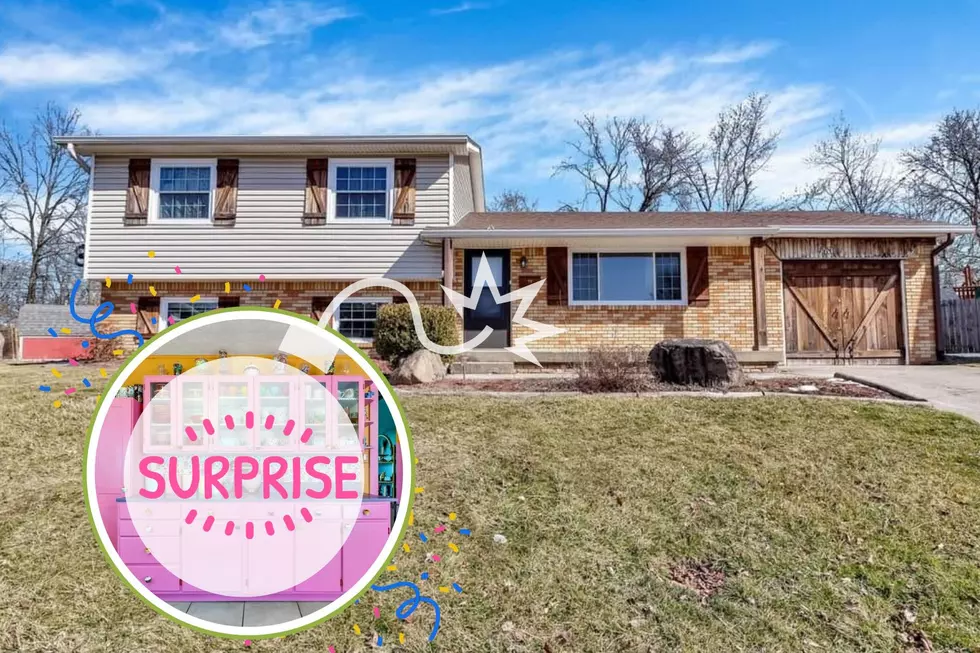
The Story of Evansville’s Most Notorious Serial Killer
This is the story of Leslie Irvin.
On Dec. 2, 1954, Leslie Irvin started his killing spree and terrorized southwestern Indiana.
In a town where people typically leave their doors unlock and shoot their guns for fun, residents across the Tri-State were buying handguns and locking doors for protection after Irvin began his massacre. No one was safe, because it seemed Irvin wanted something everyone has - money. Or, at least things he could sell for money.
Each one of Irvin's murders were the result of a robbery. He didn't seem scared to break into homes or work places to loot, and if someone was home, he handled it the same way each time - a gunshot to the back of the head.
Six people were killed total. He left a seventh victim permanently blind and crippled.
The first was 33-year-old Mary Holland, who was also 3 months pregnant. Mary and her husband, Charles Holland, owned and operated a liquor store on Bellemeade Avenue. Mary was found dead in the stores restroom the night of Dec. 2, 1954, from a single shot in the head. Her hands were tied behind her back.
The second victim was 29-year-old Welsey Kerr, who was found shot to death in a gas station off U.S. 41 on Dec. 23, 1954. Kerr worked alone at the gas station during the overnight and early hours. His body was found in the restroom with his hands tied behind his back, with a single gunshot wound to his head, much like Holland's condition. The station's cash register was empty. Both gunshot wounds were believed to come from a .38-caliber revolver. It didn't take long for police to link the two murders together, and rewards for Irvin's capture climbed up to $1,000.
Irvin cooled off his spree for a brief moment after Kerr's murder. 3 months later, in March 1955, Irvin struck again.
His third victim was Wilhelmina Sailer, a 47-year-old housewife, who was shot to death in her Posey County farm home near Mount Vernon. Her 7-year-old son found her body when he returned home from school around noon. Just like the others, Sailer's hands were bound behind her with a single shot to the head.
A week later, Irvin completed his killing when he shot Goebel Duncan and two other family members at their farm in Henderson county. All three died by single shots through their heads. Duncan's wife was also shot in the head, but survived, only to be left blinded and in critical condition. She woke up two days after the murders, but the trauma had erased her memory. The Duncan's 2-year-old granddaughter was spared. Irvin later told police he didn't kill the little girl because, "I like kids."
The Duncan's neighbor told detectives he noticed the victims standing in the front yard talking with someone around 10 in the morning on March 28, 1955, the day of their deaths. He said he saw nothing suspicious and drove on, however, he did notice a dark-colored vehicle with a beat up left side and an Indiana license plate parked nearby. The description of the parked vehicle is what ultimately lead to Irvin's arrest.
A group of young junior Sheriffs were out and about scoping out a new oil drill when they spotted a car parked out in a rural area. The group cracked jokes about it being "the murderer's car" so they shouted, "Hey! We're investigators!" to the man in the vehicle. This prompted Irvin to speed off, drawing even more suspicion. One of the men jotted down the license plate number "EL 351". Later on, one of the boy's was reading a story in the local newspaper and noticed the description of Irvin's vehicle.
He then told his mother of his suspicion, who contacted the Sheriff's office. The search turned up the name Leslie Irvin, who was on parole from the Indiana State Prison in after serving nine years for a burglary in Indianapolis.
On April 15, police said Irvin confessed to 24 burglaries throughout Southern Indiana. Irvin was also charged with four murders and admitted to two more. A wallet found on Irvin was believed Wesley Kerr's. It contained $18.
Irvin was charged and convicted for the slayings of six people. His death date was scheduled for June 12, 1955. Irvin sat in a cell in Princeton, Indiana awaiting a transfer to the Indiana State Prison in Michigan City. A few days before his transfer, Irvin made his way through several locked doors and escaped prison on January 21.
Irvin fled to Las Vegas, Los Angeles and finally to San Francisco, before the chase ended on February 9. He was arrested in a downtown San Francisco pawnshop, having traveled more than 2,000 miles in 20 days.
On June 5, 1961, the Supreme Court a ordered a new trial, shocking the Tri-State. It marked the first time the high court had overturned a conviction because of pretrial publicity. A second trial was conducted in Sullivan, Indiana, where the jury finally convicted Irvin of first-degree murder in the slaying of Wesley Kerr. Irvin received a life sentence. He was referred to as a "model prisoner" while incarcerated.
Irvin met his fate on Nov. 9, 1983, when he died from lung cancer a the age of 59.
More From WDKS-FM









